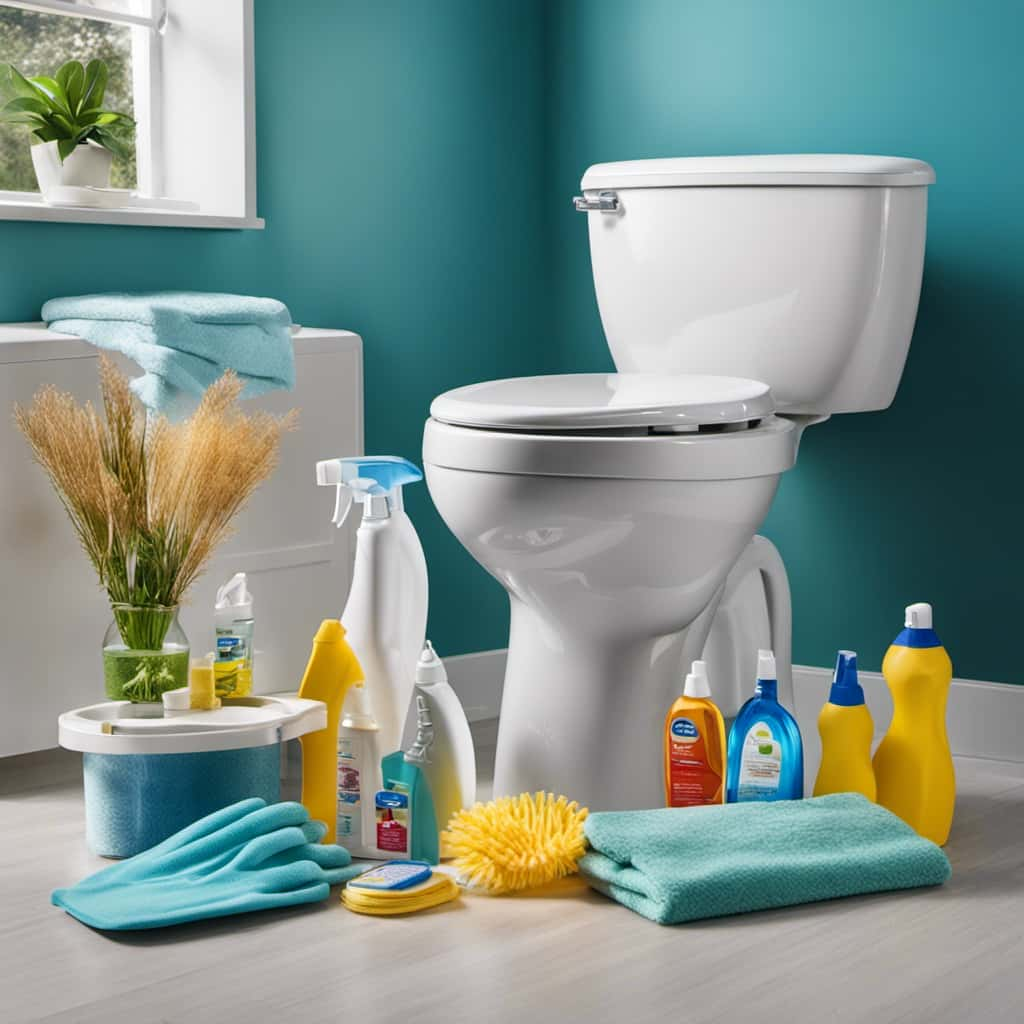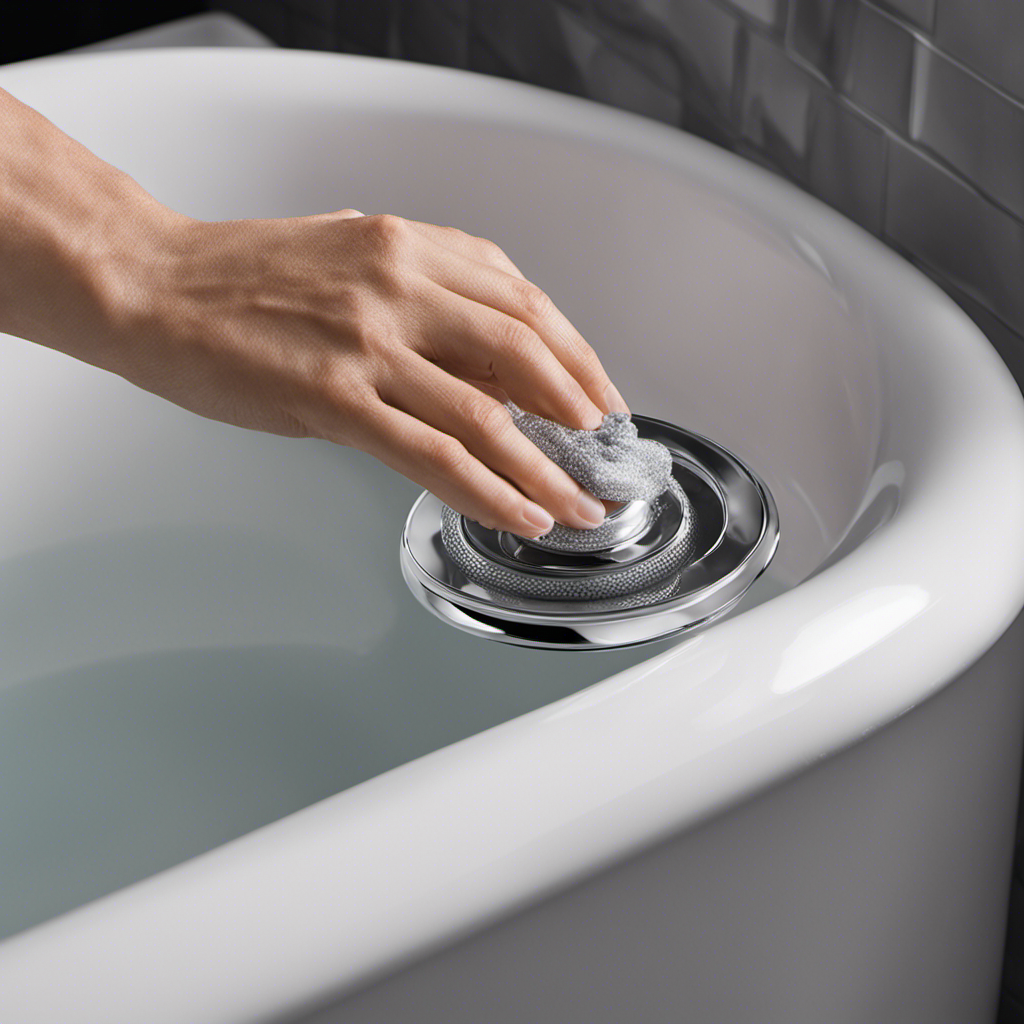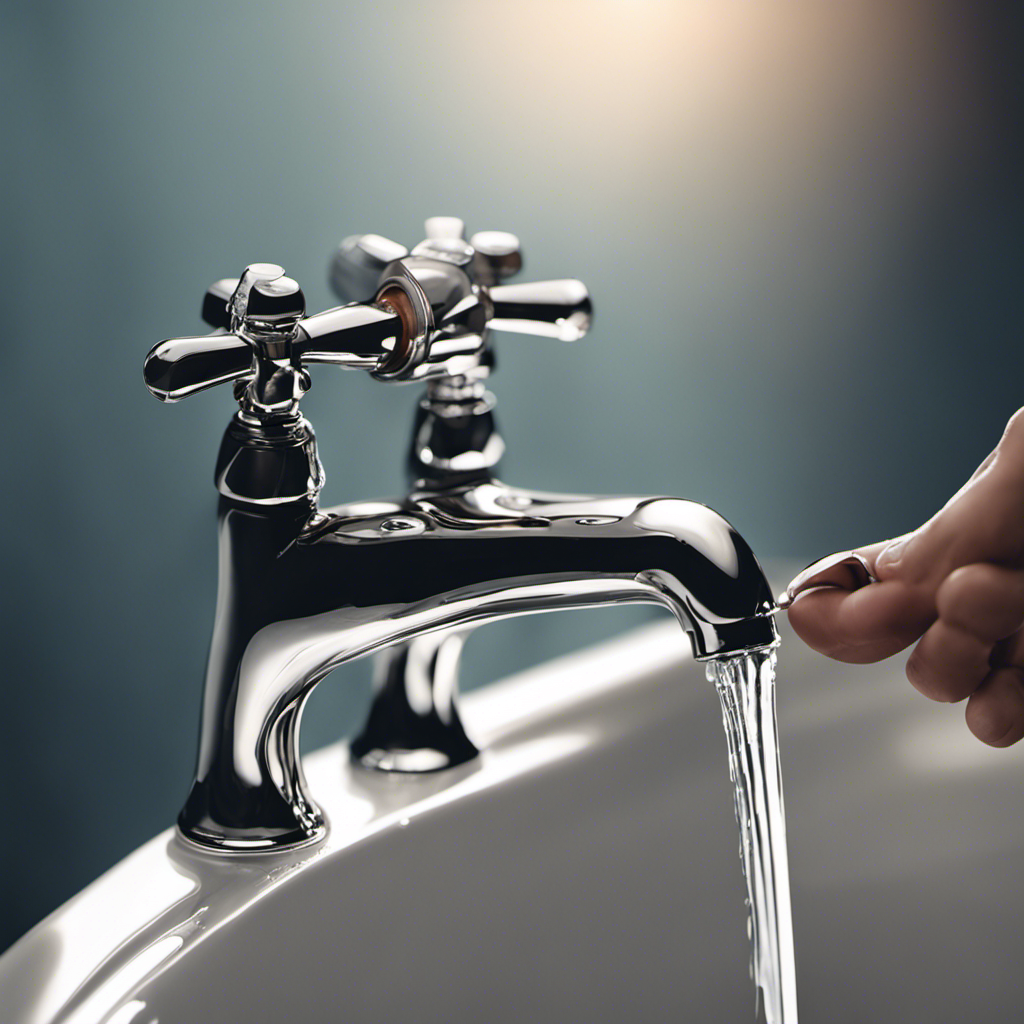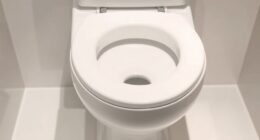Have you ever wondered why we can flush toilet paper but not wipes? Well, let’s delve into the science behind it.
The composition of toilet paper differs from that of wipes, leading to varying disintegration times. As a result, wipes can cause major blockages in sewer systems, causing costly damage and environmental harm.
In this article, we will explore the importance of proper disposal methods and the environmental impact of wipes, providing you with the knowledge needed for responsible flushing.
Key Takeaways
- Toilet paper is designed to dissolve quickly in water, minimizing the risk of clogs in sewer systems.
- Flushable wipes are not designed to disintegrate quickly and are more likely to cause clogs and blockages.
- Wipes, including baby wipes, disinfecting wipes, and makeup wipes, pose a significant threat to ecosystems and marine life.
- Proper disposal of wipes in the trash is crucial to prevent clogs and maintain the efficiency of sewage treatment plants.
Composition of Toilet Paper Vs. Wipes
The composition of toilet paper differs from that of wipes. Toilet paper is typically made from wood pulp, recycled paper, or a combination of both. It goes through a manufacturing process where the fibers are broken down and then reformed into thin sheets. This process helps to create a soft and absorbent product that easily dissolves in water.

On the other hand, wipes are made from synthetic materials such as polyester or polypropylene. They go through a different manufacturing process which involves bonding the fibers together to create a strong and durable product.
Due to these differences in composition and manufacturing processes, toilet paper has a higher biodegradability rate compared to wipes. This is an important factor to consider when it comes to the breakdown of these products in sewer systems.
Breakdown in Sewer Systems
As we continue our discussion on the breakdown of toilet paper versus wipes, it’s important to understand how these products interact with sewer systems.
When it comes to clogs and the impact on plumbing systems, here are some key points to consider:

- Toilet paper: Designed to dissolve quickly in water, toilet paper breaks down easily and flows through the sewer system without causing major issues. Its composition allows it to disintegrate rapidly, minimizing the risk of clogs.
- Flushable wipes: Unlike toilet paper, flushable wipes aren’t designed to disintegrate quickly. They’re often made from synthetic materials that are more durable, making them less likely to break down in the sewer system. This can lead to clogs and blockages in pipes and wastewater treatment plants.
- Causes of clogs: Flushable wipes are a common cause of clogs in sewer systems. When they accumulate, they can create blockages that hinder the flow of water and waste, leading to backups and potential damage to plumbing infrastructure.
- Impact on plumbing systems: The improper disposal of flushable wipes can have a significant impact on plumbing systems. Clogs can result in costly repairs, increased maintenance, and environmental concerns due to potential sewage overflow.
Understanding the causes of clogs and the impact on plumbing systems is crucial in order to make informed decisions regarding the disposal of wipes and maintain the integrity of sewer systems.
Environmental Impact of Wipes
Now let’s explore how wipes impact the environment. Wipes, including baby wipes, disinfecting wipes, and makeup wipes, pose a significant threat to our ecosystems and marine life. Unlike toilet paper, which is designed to break down quickly in water, wipes are made from materials that are more durable and do not easily disintegrate. As a result, wipes can clog sewer systems and end up in rivers, lakes, and oceans. This can have devastating effects on marine life, as they can mistake wipes for food and ingest them, leading to internal blockages and potential health risks. Additionally, the chemicals used in wipes can contaminate water sources and harm aquatic organisms. To better understand the environmental impact of wipes, let’s take a look at the following table:
| Environmental Impact of Wipes | |
|---|---|
| Effect on marine life | Potential health risks |
| Clogging sewer systems | Contamination of water sources |
| Harm to aquatic organisms | Misinterpretation as food by marine life |
It is crucial that we raise awareness about the harmful effects of wipes on the environment and make more sustainable choices to protect our planet and its inhabitants.
Differences in Disintegration Time
How quickly do wipes and toilet paper disintegrate in water? The disintegration time of wipes and toilet paper in water depends on several factors, including the materials used in their manufacturing process. Here are four key points to consider:

- Toilet paper is specifically designed to break down quickly in water due to its composition and manufacturing process. It’s made from biodegradable materials, such as wood pulp or recycled paper, which easily disintegrate when exposed to water.
- Wipes, on the other hand, are often made from synthetic materials like polyester or polypropylene, which aren’t as easily broken down in water.
- The slower disintegration of wipes can lead to clogging in sewage systems and have a significant impact on sewage treatment plants. They can accumulate and cause blockages, leading to costly repairs and maintenance.
- Proper disposal of wipes in the trash, rather than flushing them down the toilet, is crucial to prevent these issues and maintain the efficiency of sewage treatment plants.
Importance of Proper Disposal Methods
Proper disposal methods are essential for maintaining the efficiency of sewage treatment plants and preventing costly repairs and maintenance.
When it comes to hygiene practices, it’s important to understand that flushing wipes down the toilet can cause serious problems in the sewage system. Unlike toilet paper, wipes don’t disintegrate easily and can clog pipes and pumps. This can lead to blockages, backups, and overflow, which not only disrupt the treatment process but also pose a risk to public health and the environment.
To avoid these issues, it’s crucial to dispose of wipes properly by placing them in a designated trash can.
Frequently Asked Questions
Can Flushable Wipes Cause Clogs in Sewer Systems?
Flushable wipes can cause clogs in sewer systems due to their composition and lack of biodegradability. These wipes do not break down like toilet paper, leading to blockages that can be costly to remove. Additionally, their environmental impact is significant.

Are All Types of Toilet Paper Safe to Flush?
Not all types of toilet paper are safe to flush due to their potential to cause plumbing issues and environmental harm. It is crucial to consider toilet paper alternatives and be mindful of the impact of flushing wipes.
Can Wipes Be Recycled Like Toilet Paper?
Wipes sustainability is a concern. Recyclable materials could be used, but guidelines for determining if a wipe is truly flushable need to be established to prevent clogging and environmental damage.
How Long Does It Take for Wipes to Break Down in the Sewer System?
In the sewer system, wipes take a long time to break down. To properly dispose of wipes, they should be thrown in the trash. Wipes labeled as flushable can still cause clogs and damage to plumbing systems.
Are There Any Alternatives to Using Wipes That Can Be Safely Flushed?
Eco-friendly alternatives to wipes include bidets. Bidets have pros and cons, such as reducing waste but requiring installation. Bidets provide a hygienic and efficient way to clean, but may not be suitable for everyone.

Conclusion
In conclusion, it’s crucial to remember that flushing wipes down the toilet can have detrimental effects on our sewer systems and the environment. Unlike toilet paper, which quickly disintegrates, wipes take a significantly longer time to break down. As a result, they can clog pipes and cause costly damages.
Here’s an interesting statistic: Did you know that a single flushable wipe can take up to 100 years to fully decompose?
Let’s do our part by disposing of wipes properly and preserving our sewer systems for future generations.










